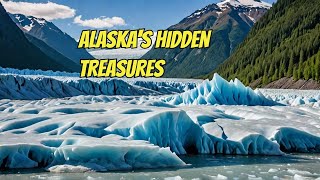Alaska's HIDDEN Gems That Will Leave You SPEECHLESS!
Alaska's HIDDEN Gems That Will Leave You SPEECHLESS!

Now, let’s rewind a bit. Why on earth would Russia sell such a vast expanse of land? Well, the truth is, Russia was grappling with a myriad of challenges. The remote location of Alaska, coupled with its harsh climate, made it incredibly difficult to tap into its resources. The Russian-American Company, which managed the territory, was struggling financially. Fur trade profits had plummeted, and the once-thriving industry was in decline.
But that wasn’t all. Russia had just come out of the Crimean War, a conflict that had significantly weakened its global standing. The fear of losing Alaska to Britain loomed large. Imagine being in a position where you could potentially lose a valuable territory without any compensation. Selling Alaska became a strategic move—not just to gain some much-needed financial relief, but also to secure a foothold against the British Empire’s dominance in North America.
At the same time, Russia was looking to focus its energies on more manageable territories in Asia and Europe. Alaska, with its geographical isolation and logistical challenges, was proving to be more of a burden than a blessing. So, when U.S. Secretary of State William H. Seward approached Russian Minister Eduard de Stoeckl, it was a meeting of minds. Both sides saw the potential benefits of this transaction, despite the public skepticism that would follow.
Now, let’s talk about the United States. The motivations for the U.S. were just as compelling. The idea of manifest destiny—this belief that Americans were destined to expand across the continent—was alive and well. Alaska fit perfectly into that vision. The potential wealth of the land, from fur and fish to the gold and oil that would later be discovered, was tantalizing. The acquisition also offered a strategic advantage in the Pacific, positioning the U.S. closer to Asia.
The treaty was signed on March 30, 1867, and by October 18 of that same year, Alaska was officially in American hands. But the initial public reaction was far from enthusiastic. Many Americans mocked the purchase, dubbing it “Seward’s Folly” or “Seward’s Icebox.” They viewed Alaska as a frozen wasteland, unworthy of the investment.
Fast forward a few decades, and the narrative shifted dramatically. In 1896, gold was discovered in Alaska, and suddenly, the land that was once ridiculed became a beacon of opportunity. Russians, too, felt a pang of regret as they watched the riches flow from the territory they had let go.
Today, Alaska stands as a testament to the foresight of those who recognized its potential. It’s a land rich in natural resources, with stunning landscapes that attract millions of visitors each year. The Alaska Purchase is often hailed as one of the most astute real estate deals in history, a reminder that sometimes, what seems like folly at first can turn into a fortune.
So, the next time you think of Alaska, remember that it’s not just a beautiful wilderness; it’s a story of strategic decisions, economic challenges, and the ever-changing tides of history. Who would have thought that a land once dismissed as worthless would become a cornerstone of American identity?
